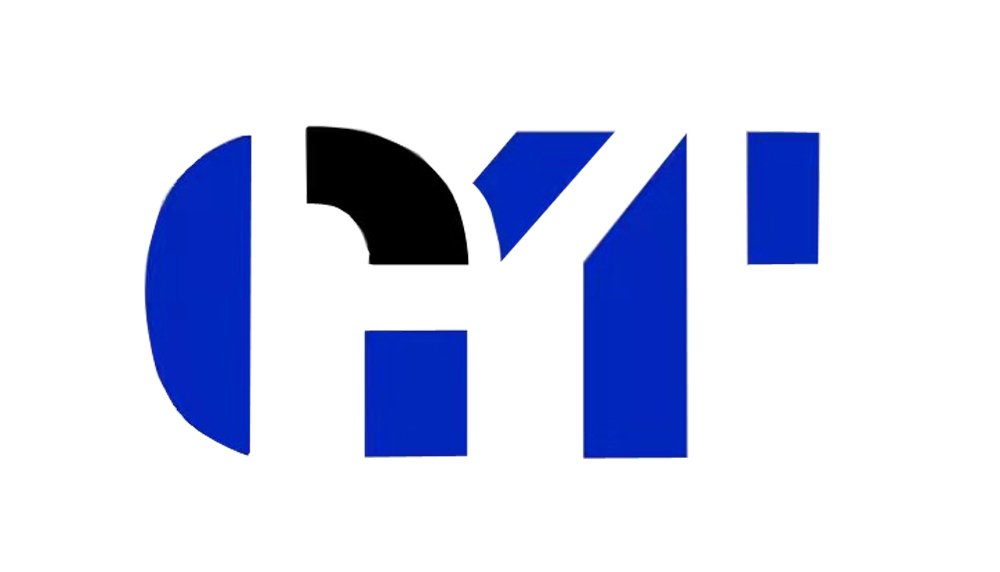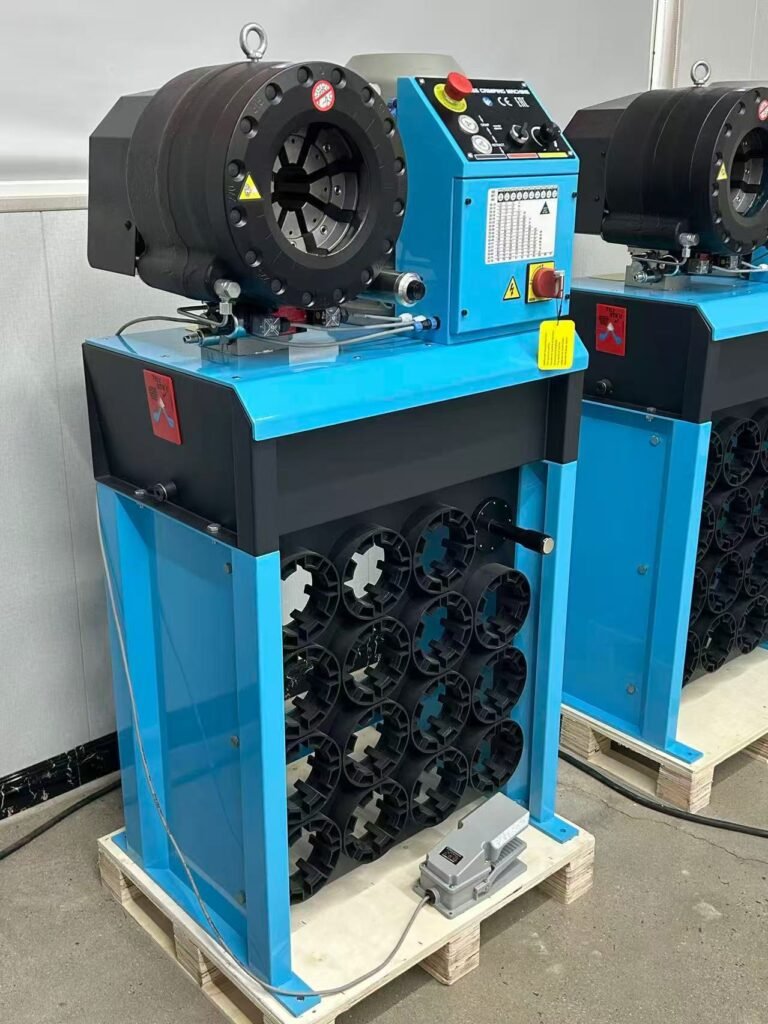How to Crimp a Hydraulic Hose Fitting?
A leaking hydraulic hose1 can stop your machine and waste money. But a well-crimped hose keeps pressure strong and work safe.
To crimping a hydraulic hose fitting, firstly, prepare the hose and fittings. Then select the correct dies set2 and insert the hose and fittings, position the assembly3 in the crimper. Next step is to use a hydraulic hose crimp to complete the crimp. At last, verify crimp diameter4, alignment,5 hose condition, crimp length and position, leakage and pressure test.
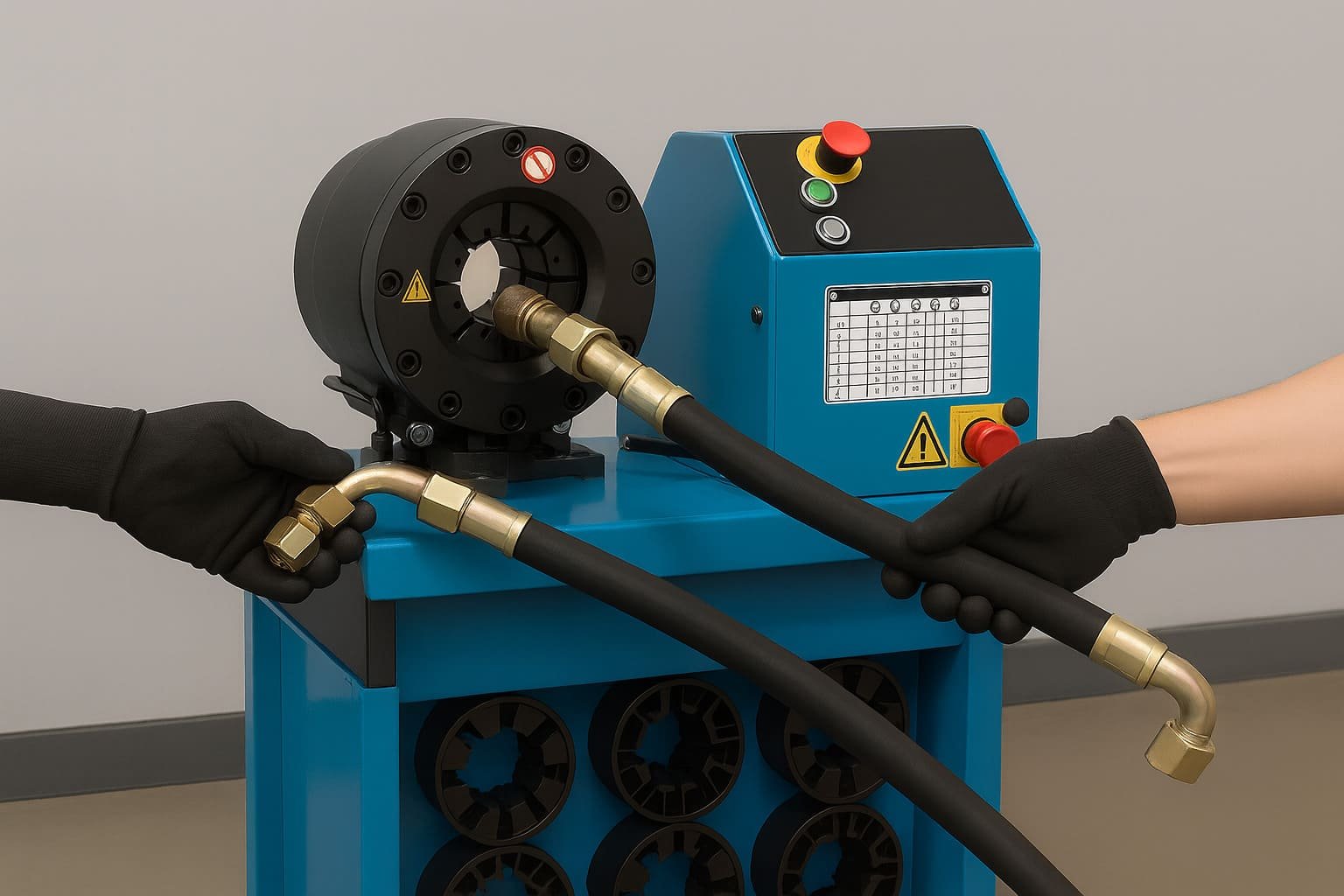
When I first learned to crimp a hose, I thought it was just about pressing metal onto rubber. I soon found out it was more like craftsmanship. Every detail mattered — from cutting to alignment. Here is how I now guide others to do it right, step by step.
How to crimp with a hydraulic crimper6?
When a customer first holds a crimper, they often look unsure. I used to be the same way. A heavy tool, a lot of pressure, and the fear of making a mistake. But once you understand the process, it becomes easy and satisfying.
To crimp with a hydraulic crimper6, place the hose and fitting between the correct dies, align the crimp mark7, and operate the machine until the set pressure or crimp diameter is reached.
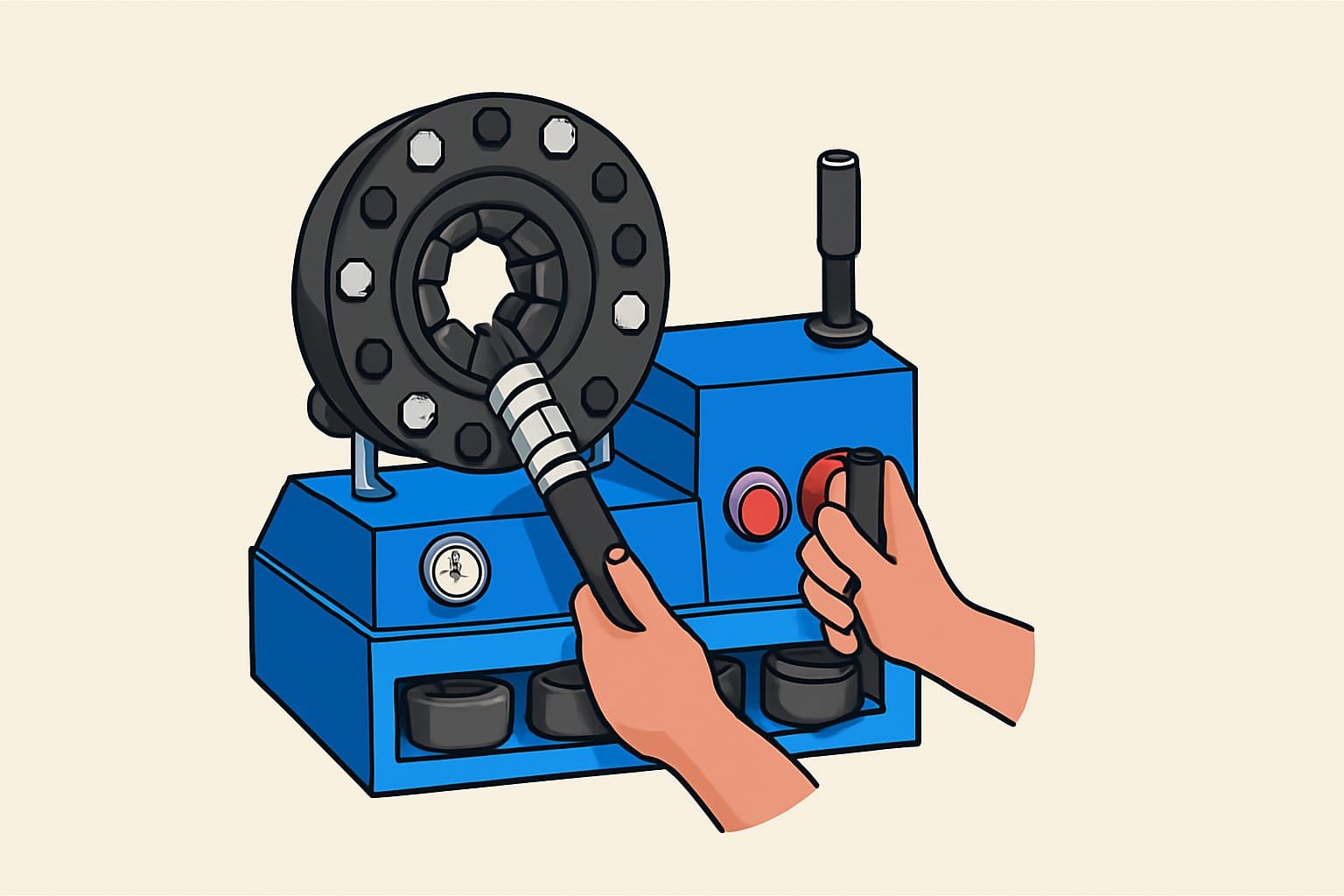
Crimping is not just pressing a button. It is about understanding how the machine and fitting work together. I always start by checking the fitting type8 and the hose size. Then, I choose the right die set. The die must match the outer diameter of the ferrule9. Next, I mark the insertion depth10 on the hose. This mark helps me make sure the fitting does not slide out during crimping. I insert the hose fully, position it inside the die, and make sure the crimp mark is visible and straight. Then I close the dies slowly and press the crimping handle11 or operate the electric pump. I watch the pressure gauge12 or digital display until it reaches the target value. After releasing, I check that the crimp is smooth and even. Every correct crimp gives me a small sense of pride.
| Step | Action | Purpose |
|---|---|---|
| 1 | Select correct die set | Matches hose and fitting size |
| 2 | Mark insertion depth10 | Ensures fitting stays in place |
| 3 | Insert hose fully | Prevents leak or slippage |
| 4 | Align crimp mark | Keeps crimp even |
| 5 | Operate crimper | Achieves final crimp diameter |
| 6 | Inspect result | Confirms quality and safety |
How to crimp correctly?
I have seen many hoses fail because of simple mistakes. Early in my work, I once over-crimped a hose that later burst during testing. That failure taught me the importance of correct crimping.
To crimp correctly, follow the manufacturer’s die chart, ensure the fitting is fully inserted, crimp to the correct diameter, and inspect for evenness and no surface damage.
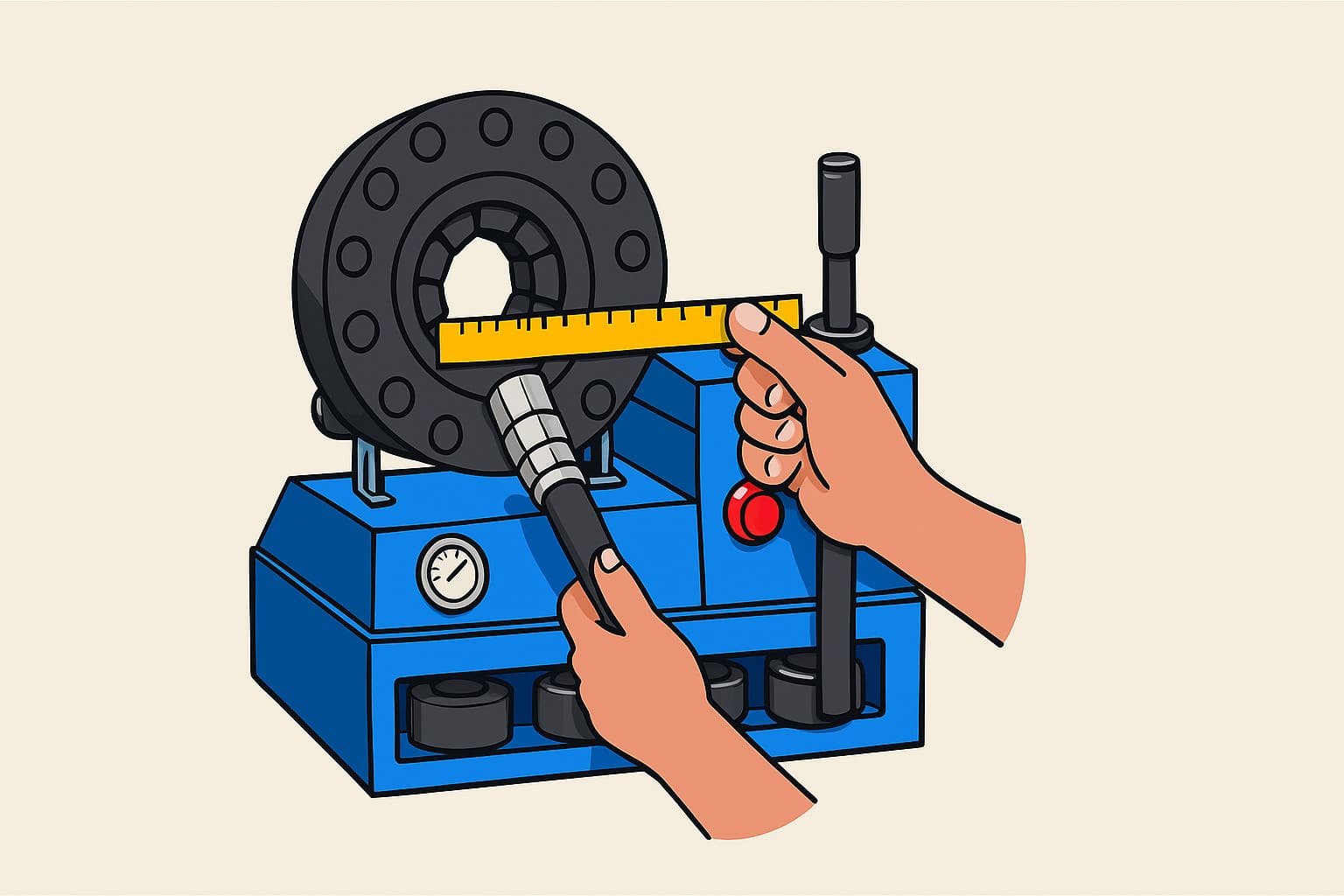
Correct crimping means consistency. I always check the crimping diameter before starting a batch. Each fitting model has a standard diameter range13. If the crimp is too loose, oil can leak under pressure. If it is too tight, the inner tube can crack. I also check that the die faces are clean and free from rust. Dirty dies can scratch the ferrule and cause leaks. After crimping, I measure the diameter using a vernier caliper14 and compare it with the chart. I also look at the crimp pattern15 — it should be even and centered. Then I test with pressure if possible. This habit keeps me confident in my work.
| Key Check | Description | Result |
|---|---|---|
| Crimp diameter | Measure after crimping | Within tolerance |
| Fitting insertion | Check mark alignment | Fully inserted |
| Surface | Smooth, no cracks | Pass |
| Crimp pattern | Even, centered | Pass |
| Test pressure | Verify under load | No leaks |
What happens if you over crimp a hydraulic hose?
Over-crimping used to scare me. Once, a worker in our team made a crimp that looked perfect but failed in use. The inside liner had torn, and hydraulic oil sprayed out at high pressure. That day, we learned to respect precision.
If you over-crimp a hydraulic hose, the inner tube and reinforcement get crushed, causing leaks, reduced flow, or sudden hose failure under pressure.
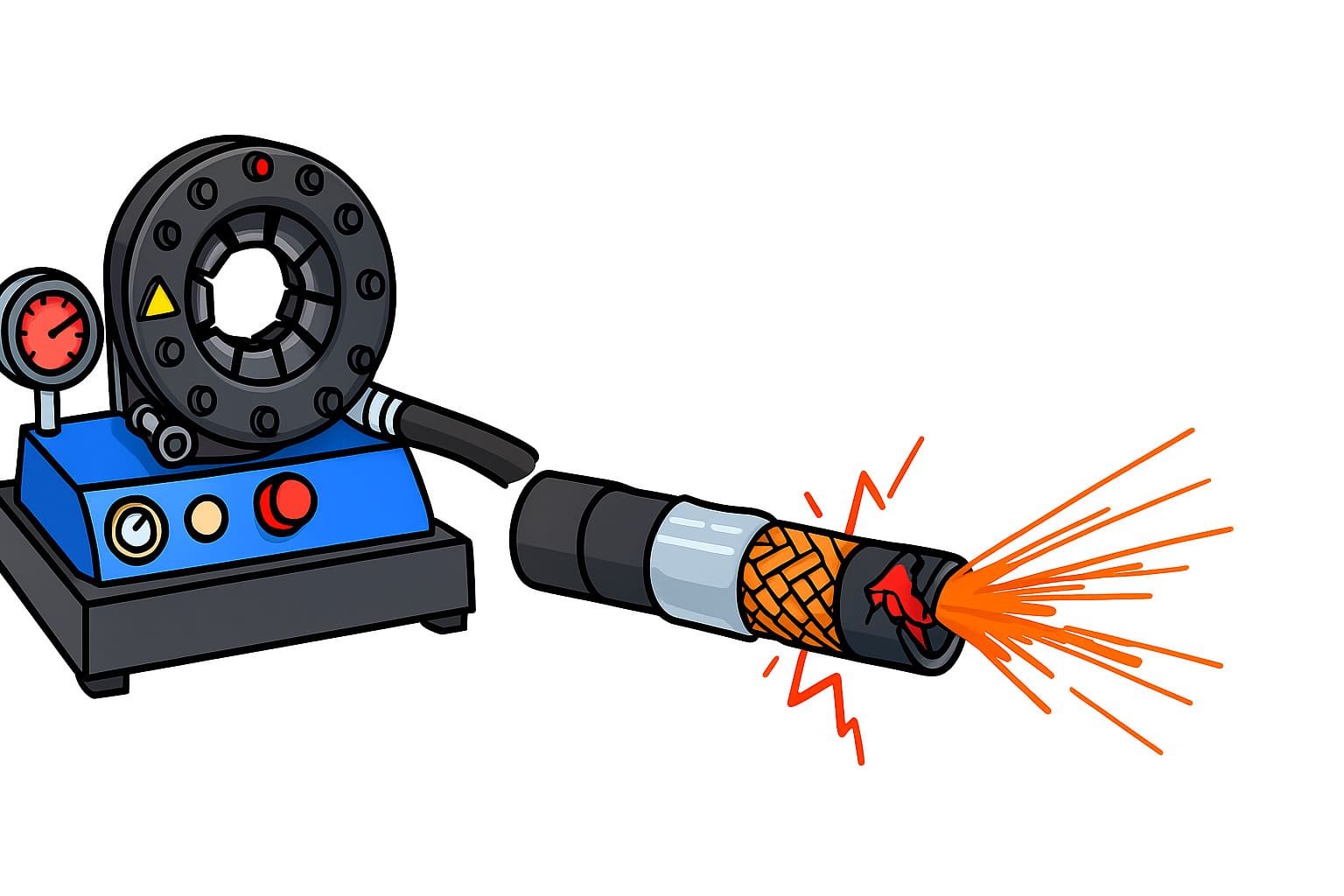
When a ferrule is squeezed too tightly, it can cut into the hose layers. The rubber inside cannot expand and contract naturally. Over time, the pressure causes cracks or internal separation. Sometimes, the damage is invisible from outside, which makes it even more dangerous. I often explain this to new customers — they think tighter is safer, but in hydraulics, accuracy is safer. A digital crimper16 or micrometer can help control this. If you see marks, flattening, or an uneven shape on the crimp, it is better to redo it. One careful minute saves hours of machine downtime later.
| Problem | Cause | Effect |
|---|---|---|
| Over-crimping | Excess pressure or wrong die | Hose damage |
| Flattened ferrule | Misaligned dies | Weak connection |
| Inner tube cut | Excessive compression | Leak and burst |
| Flow restriction | Reduced passage | Pressure loss |
| Premature failure | Hidden internal damage | Safety hazard |
What are some common mistakes made during the crimping process?
At CYT-HYDRAULIC, I often help customers fix hose problems. Most of them come from small errors during crimping. These mistakes are easy to avoid once you understand them.
The most common mistakes are using the wrong die, not inserting the fitting fully, ignoring the crimp diameter, misalignment,5 and skipping final inspection.
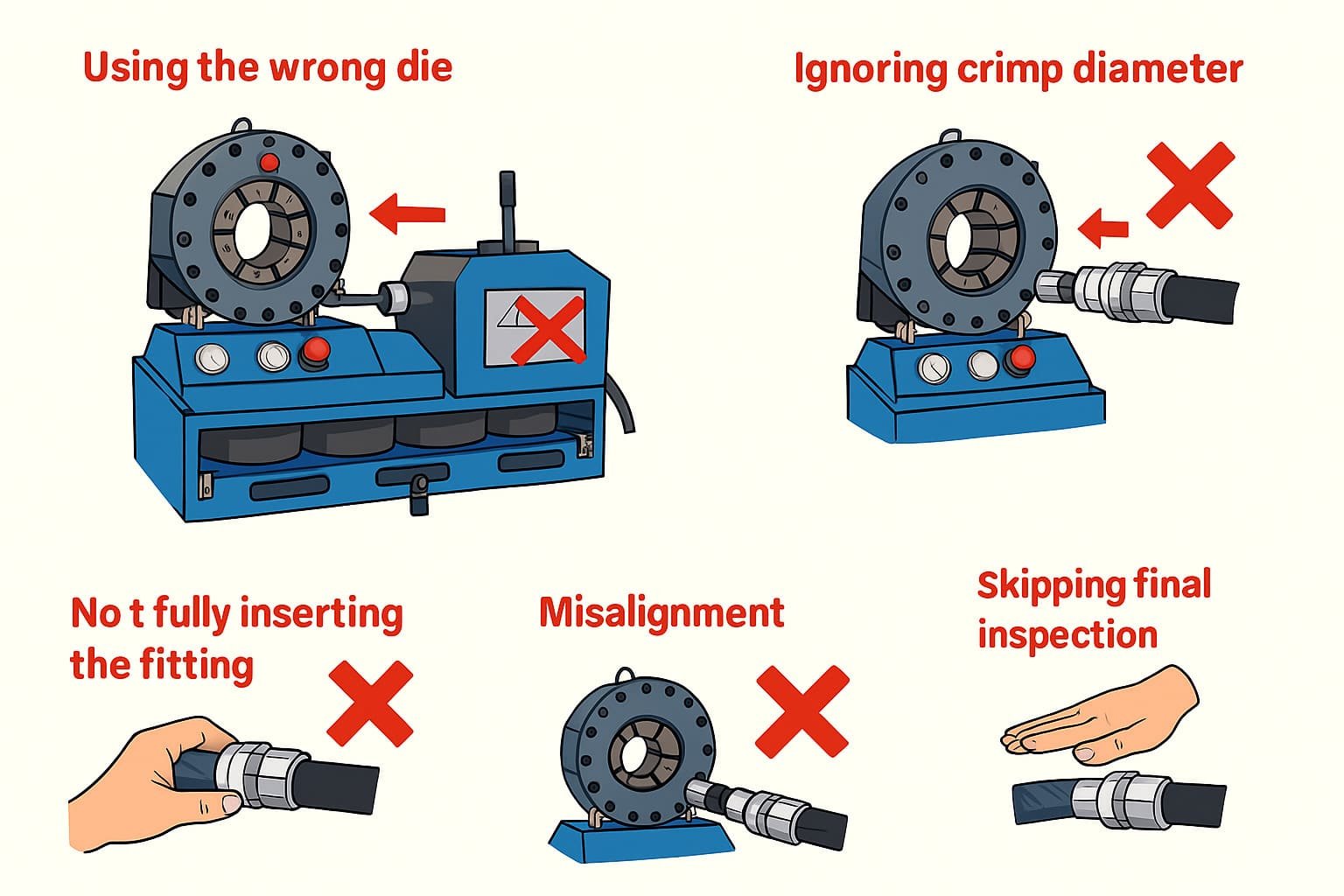
I once helped a customer who had ten leaking hoses in one week. The cause was simple: he used a die for a different ferrule type. Another customer did not clean the hose ends after cutting. Small debris entered the system and damaged the seal. Mistakes like these not only waste materials but can stop an entire machine. I always tell my customers to build habits — clean, measure, and inspect every hose. Make a checklist and follow it every time. That is how professionals work. It also makes our slogan — “We provide one-stop solving solution” — real, because we solve problems before they happen.
| Mistake | Cause | How to Avoid |
|---|---|---|
| Wrong die size | Confusing model or marking | Check die chart |
| Incomplete insertion | Lack of marking | Draw insertion line |
| Misalignment | Loose fixture | Hold straight before crimp |
| Skipped cleaning | Cutting debris | Blow and wipe clean |
| No inspection | In a hurry | Always measure and record |
Conclusion
Crimping is not just a step — it is the heart of a safe hydraulic system. With the right steps and care, every crimp becomes a promise of reliability.
Understanding maintenance can prolong the life of your hydraulic hose and prevent costly failures. ↩
Using the right dies set ensures a proper fit, preventing leaks and failures. ↩
Understanding how to properly position the assembly is crucial for achieving a secure and leak-free crimp. ↩
Accurate measurement is crucial for ensuring the safety and reliability of hydraulic systems. ↩
Understanding alignment in crimping ensures safety and reliability, preventing costly leaks and failures. ↩
Choosing the right hydraulic crimper can enhance your crimping efficiency and accuracy. ↩
Understanding the significance of aligning the crimp mark ensures a secure and effective crimp, preventing leaks and failures. ↩
Knowing the types of fittings helps in selecting the right components for your hydraulic system. ↩
Understanding the ferrule's role can help in selecting the right components for your system. ↩
Marking insertion depth ensures the fitting stays secure, preventing leaks. ↩
Learn about the mechanics of crimping handles to improve your crimping technique. ↩
Understanding how to read a pressure gauge is essential for safe hydraulic operations. ↩
Understanding the standard diameter range is crucial for ensuring proper crimping and preventing leaks. ↩
Understanding how to use a vernier caliper is crucial for accurate measurements in hydraulic hose crimping, ensuring safety and reliability. ↩
A proper crimp pattern is vital for ensuring the integrity of the hydraulic connection. ↩
A digital crimper can enhance precision, reducing the risk of errors in hydraulic connections. ↩
